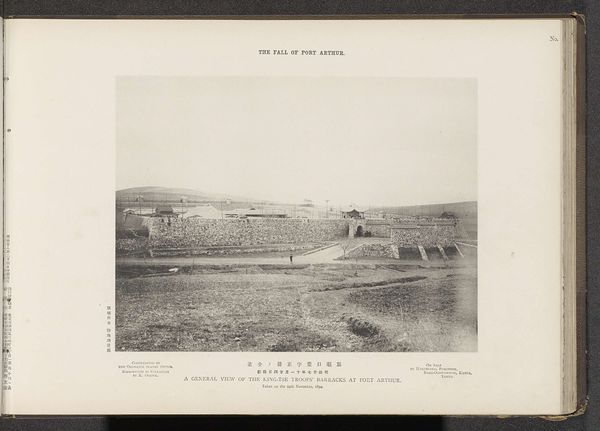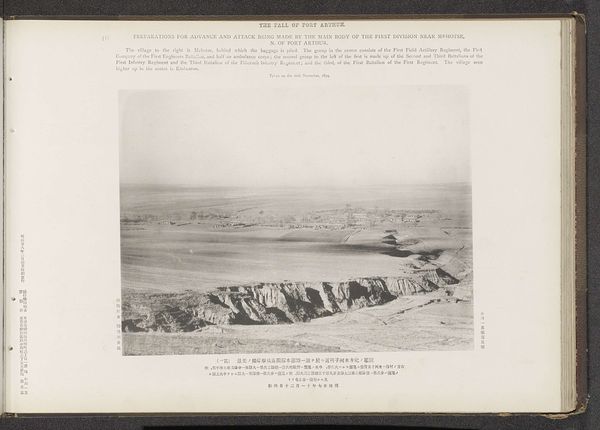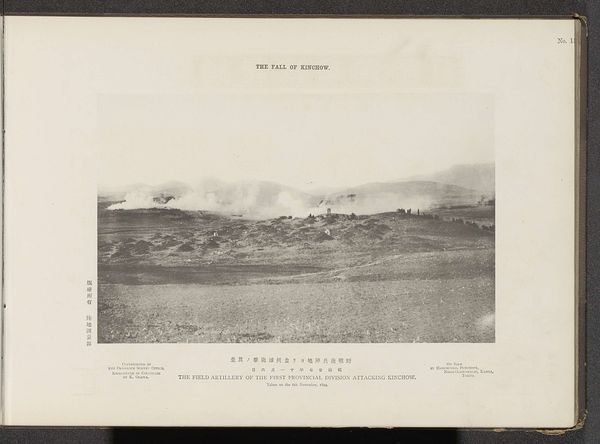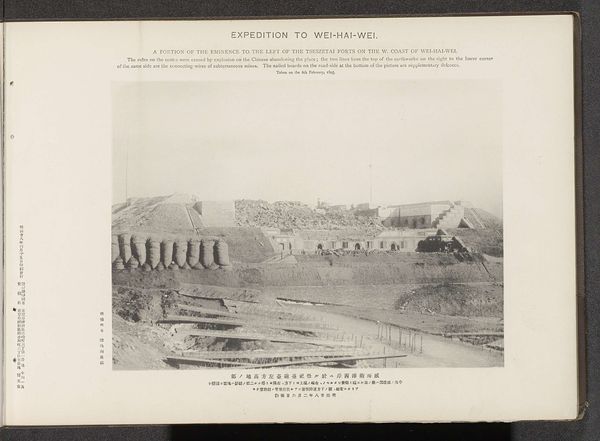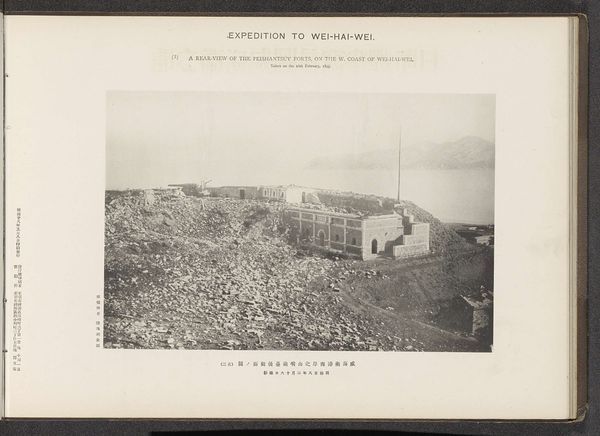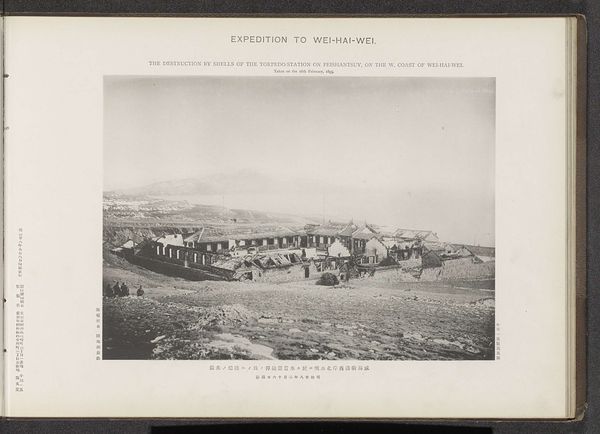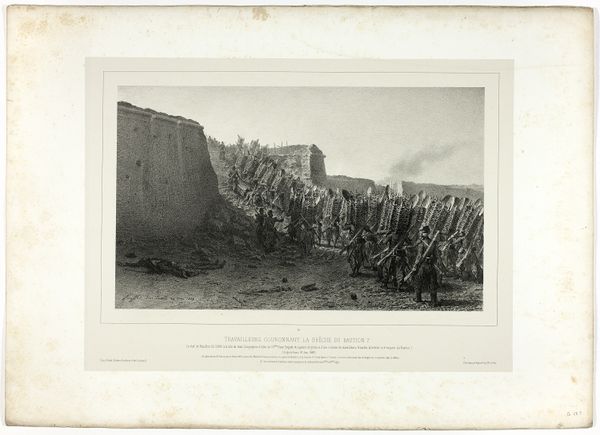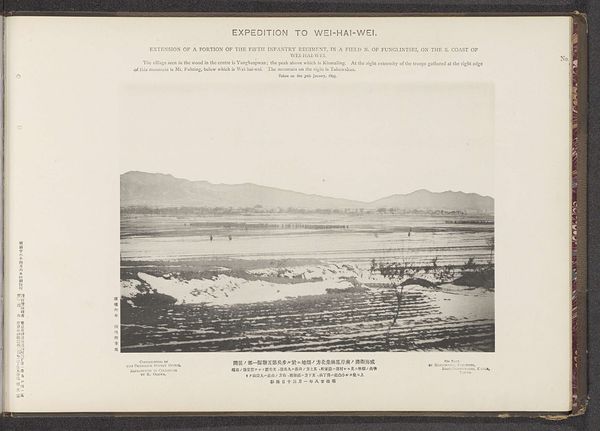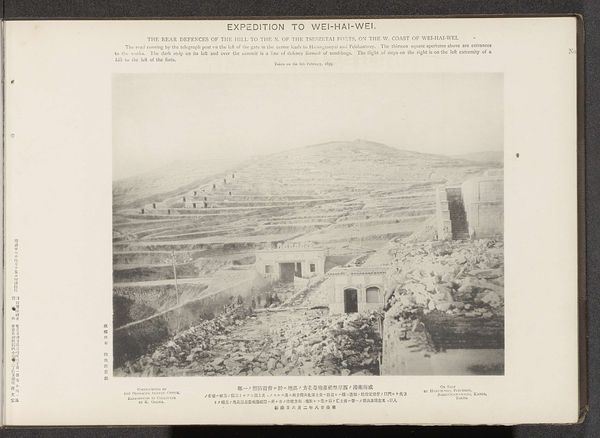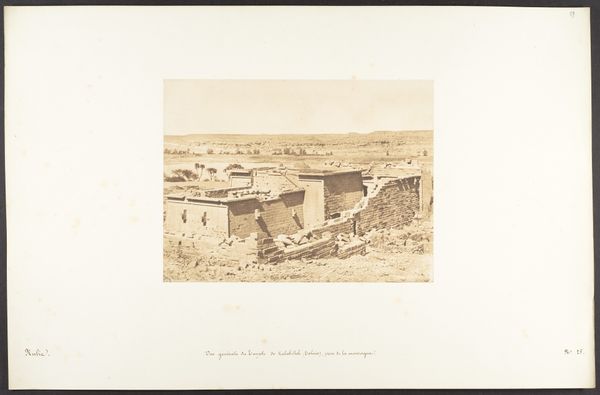
The central and part of the right portion of Tseszetai forts on the W. Coast of Wei-Hai-Wei Possibly 1895
0:00
0:00
print, photography, albumen-print
# print
#
asian-art
#
landscape
#
photography
#
albumen-print
Dimensions: height 204 mm, width 288 mm
Copyright: Rijks Museum: Open Domain
Curator: Here we have "The central and part of the right portion of Tseszetai forts on the W. Coast of Wei-Hai-Wei," possibly from 1895. It’s an albumen print, part of a larger photographic survey likely conducted by the Ordnance Survey Office. Editor: The landscape is serene yet unsettling; it gives an impression of bleakness, doesn’t it? This pallid fort seems abandoned, like it has simply sat in place since the last garrison departed forever ago. Curator: Indeed. Wei-Hai-Wei was strategically important. We have here not just a landscape, but a portrait of geopolitical tension and the rise of Imperialism in Asia at the end of the 19th century. Editor: Right, the landscape isn’t just empty, it’s charged. It makes you think about power. Are those fortifications truly formidable or crumbling? And what does it mean to photograph something designed to intimidate, to strip it of its power and reframe it? Curator: The photograph gives a visual document for assessing defenses and infrastructure. The clarity would be incredibly valuable. Yet it does carry some of that charged feeling that you picked up on—a feeling that comes with documenting colonial enterprises. Editor: I keep circling back to the way that distant mountain in the background mirrors the quiet stillness here, adding another dimension, somehow magnifying the sense of lonely, lasting stillness. It invites a reflection on permanence against a scene that’s certainly marked by its own historic moment. Curator: I concur. I also see how the print medium underscores ideas of reproducibility and documentation and distribution of imagery meant to serve those political functions. Editor: So, the quiet image screams about geopolitics, documentation, imperialism, and forgotten sentinels guarding their silence. A testament, if ever there was one, to how photographs really are far more than a simple depiction of light and time. Curator: I appreciate your creative interpretation. You've shed a more complex light on this seemingly straightforward documentation. Editor: Thank you. Likewise, understanding how the print, a photograph, circulates for a specific political purpose adds a richer layer to its artistry, showing the relationship between design and purpose.
Comments
No comments
Be the first to comment and join the conversation on the ultimate creative platform.
